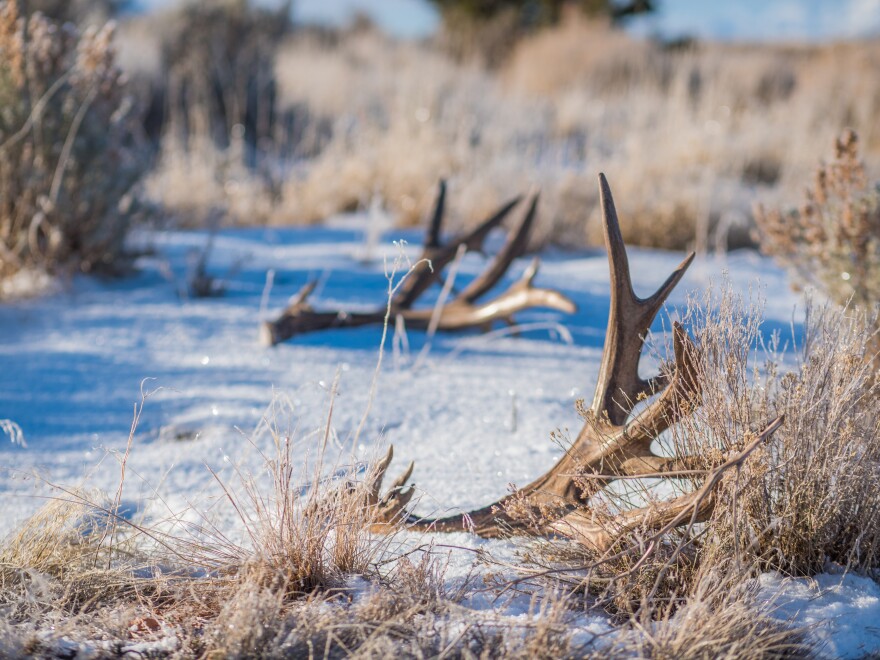Those looking to collect antler sheds from now until mid-April are required to complete a certificate from the Utah Division of Wildlife Resources.
Starting now through early spring animals with antlers will begin shedding their horns in preparation to regrow the antlers during the late spring. Collecting the antlers is legal in Utah, however in order to gather sheds between February 1st and April 15th the Utah Division of Wildlife Resources requires completion of an ethics program. DWR Public Information Officer Faith Jolley says last year they had nearly 19,000 residents complete the antler shed course. She explains why it’s required.
“It’s just kind of a sensitive time of year for big game animals like deer and elk and moose,” Jolley explained. “They're having a hard time finding food because of the snow, and they typically running off of their fat reserves at this point in the season. So, you just want to educate people on that and remind people not to chase any of these animals because that can cause them to burn up some of that energy that they need to be able to make it through the winter.”
If you want to collect sheds from moose, deer and elk after April 15th you do not need to complete the ethics course. The course takes about a half hour and includes a 25-question quiz, with many of the answers being True or False. The course can be found here. Jolley says once you complete the course you print off the certificate and carry it with you as you hunt for sheds as DWR officers will check for the certificate. Jolley explains some of the appeal of finding and keeping antlers.
"People will just use them in décor, that's becoming a popular trend,” Jolley continued. “People will make chandeliers, different things out of them, sometimes people will sell them. Kind of a variety of things that people will do with them. A lot of times it's just a fun exciting way to connect with nature for people. They’re out hiking, and they also like to look for these antlers at the same time. So it's just kind of a fun family activity for a lot of people.”
There are a few regulations regarding where you can collect sheds. Gathering antlers on Wildlife management areas that are closed for the winter and spring is prohibited. The closures occur to protect animals and their habitat, shed hunters are encouraged to check for any closures before entering a wildlife management area. Additionally, you must have written permission from landowners before gathering antlers on private property. Jolley says finding deer antlers are most common, but you can find sets from elk and moose across the state.
“It is more common to find deer antler sheds, but yeah people will find elk, people find moose,” Jolley said. “It is pretty exciting when you do find it. The quintessential moment is when you find both pairs of those antlers you have a full set. That's kind of what a lot of people look for. It’s a common pastime for a lot of Utahns and we just want to make sure they're doing it responsibly.”
Jolley adds if you find a skull with antlers or horns still attached the animal may have been poached. She says you should take photos of the skull, pinpoint the location and report it to the nears DWR office. If the animal died of natural causes you may be allowed to keep your find.





